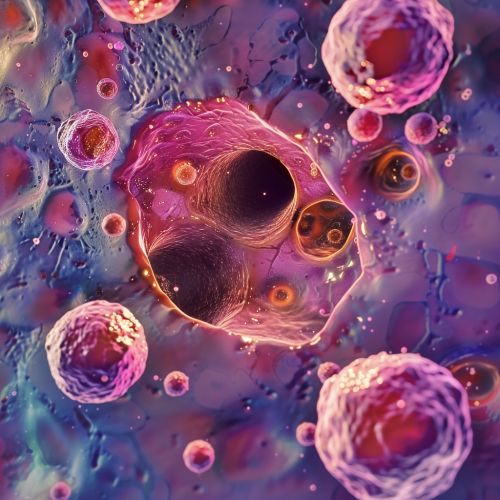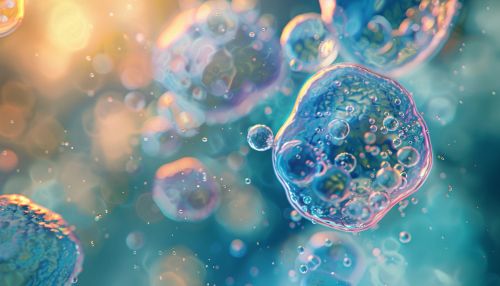DNA extraction
Introduction
Deoxyribonucleic acid (DNA) extraction is a process of purifying DNA from samples using a combination of physical and chemical methods. The first isolation of DNA was done in 1869 by Friedrich Miescher. Currently, it is a routine procedure in molecular biology or forensic analyses.
Principles and Methods
The basic principle of DNA extraction involves three steps: cell disruption, protein removal, and DNA recovery.
Cell Disruption
The first step in DNA extraction is breaking the cellular and nuclear membranes to release the DNA into solution. This is often achieved through mechanical disruption, enzymatic reactions, or detergent-based lysis.


Protein Removal
After cell disruption, proteins and other cellular debris must be removed. This is usually done by adding a protease (protein-digesting enzyme) or by a phenol-chloroform extraction. Phenol-chloroform extraction is a method where phenol denatures proteins, and chloroform separates the phenol and protein from the DNA.
DNA Recovery
The final step is recovering the DNA. This can be done by alcohol precipitation or by using a DNA-binding membrane in a commercial DNA extraction kit.
Types of DNA Extraction Methods
There are several types of DNA extraction methods including organic extraction, solid-phase extraction, and magnetic bead extraction.
Organic Extraction
Organic extraction, also known as phenol-chloroform extraction, is a method that has been used for many years. It involves the use of phenol and chloroform to denature proteins and separate them from the DNA.
Solid-Phase Extraction
Solid-phase extraction is a method that uses a silica membrane or spin column to bind the DNA. The DNA is then washed and eluted from the membrane.
Magnetic Bead Extraction
Magnetic bead extraction is a method that uses magnetic beads to bind the DNA. The beads are then washed and the DNA is eluted.
Applications
DNA extraction is used in many areas of science and medicine. It is a crucial step in genetic engineering, molecular biology, and forensic science.
Genetic Engineering
In genetic engineering, DNA extraction is used to isolate DNA that will be cut with restriction enzymes and inserted into a vector for cloning.
Molecular Biology
In molecular biology, DNA extraction is used to study the function of genes and to sequence DNA.
Forensic Science
In forensic science, DNA extraction is used to obtain DNA profiles from evidence that can be compared to suspects or used to identify victims.
Challenges and Considerations
There are several challenges and considerations in DNA extraction. These include the quality and quantity of DNA, the presence of inhibitors, and the type of sample.
Quality and Quantity of DNA
The quality and quantity of DNA extracted can affect subsequent analyses. High-quality DNA is free from protein, RNA, and other contaminants. The quantity of DNA needed depends on the downstream application.
Presence of Inhibitors
Some samples may contain inhibitors that can affect the DNA extraction process or subsequent analyses. These inhibitors can be proteins, fats, polysaccharides, or even substances used in the collection or storage of the sample.
Type of Sample
The type of sample can affect the DNA extraction process. Different types of cells have different structures and compositions, which can affect how easily the DNA can be extracted.
Conclusion
DNA extraction is a crucial step in many areas of science and medicine. Despite its challenges, it is a routine procedure that has been refined over the years to ensure the quality and quantity of DNA needed for downstream applications.
